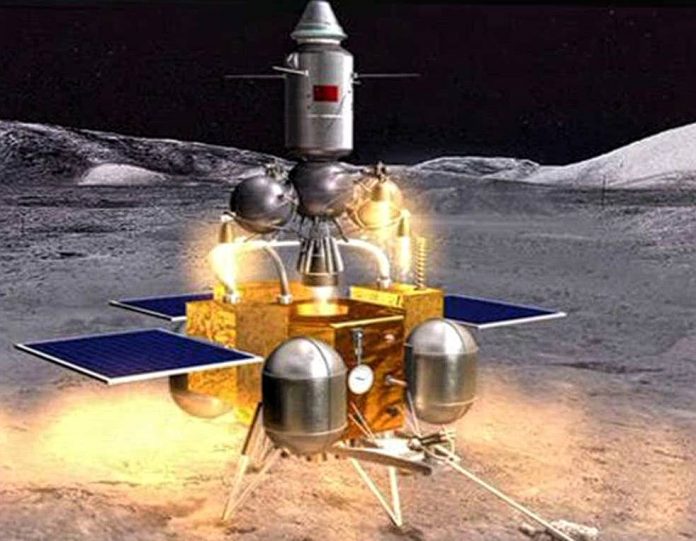
The China National Space Administration (CNSA) has revealed plans to undergo a lunar mission next November. The trip intends to bring some samples of rock to the Earth for studying.
The CNSA might also consider sending a spacecraft to the Moon’s far side in 2018, according to some sources.
In the meantime, the Chang-e’5 lunar probe will carry out the November mission for sampling.
China became the third country to land a rover on the Moon’s surface in 2013, though their machine suffered from significant technical issues. However, Chinese mission control managed to keep it working until August of last year.
The Chang-e’5 will collect 2kg of Moon rocks
The Chang-e’5 spacecraft weighs 8.2 tons and packs four modules, an orbiter, a returner, an ascender, and a lander. The probe will collect a minimum 2kg of lunar material before returning to Earth. It bears the name of the goddess of the Moon according to the Chinese tradition.

Chang-e’5 will take off from the Wenchang Satellite Launch Center, located on the Hainan Island, at the country’s southernmost border.
The rocket responsible for getting it out of the atmosphere is China’s Long March 5, also known as Changzheng 5, which has completed two successful launches so far and will do two more in 2018 and 2020.
How does the Chang-e’ work?
The big Chang-e’5 capsule will not return to the Earth in one piece. After the lander module hits the gray soil, the probe will collect the lunar rock samples and put them into a particular vessel in the ascender module.
The ascender will then take off from the moon and bring the samples to the orbiter and the returner modules which will be, as the first one’s name indicates, orbiting the satellite.
The returner will then make the trip back to Earth, a flight that will reach a speed close to second cosmic velocity (about 6.8 miles per second). This return trip will be China’s first to do so in history.
China wants to conquer the Dark Side of the Moon
If all goes well, China will then attempt to put the Chang-e’4 probe on the far side of the moon, somewhere in 2018. If they manage to do so, it will be the first soft landing on that particular area in the entire history of the human race.
The mission would serve to establish communications from this hidden place on the lunar surface, according to CNSA. Statements from its vice director, Wu Yanhua, also point out to a possible lunar mission with astronauts, the first one since 1969.
Source: CCTV











